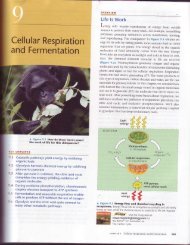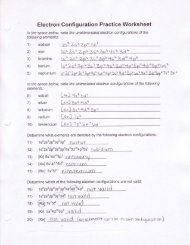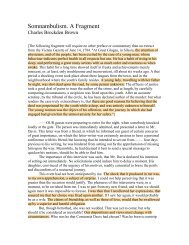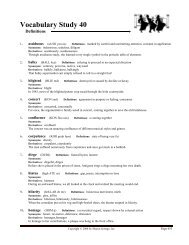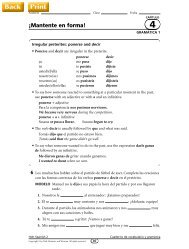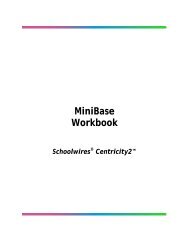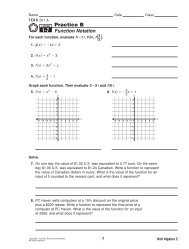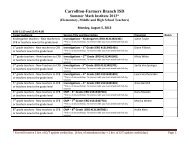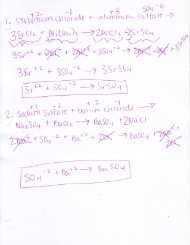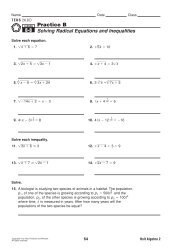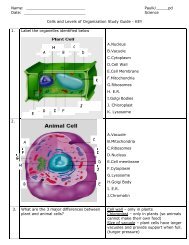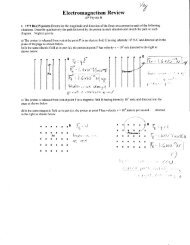Solutions
Solutions
Solutions
Create successful ePaper yourself
Turn your PDF publications into a flip-book with our unique Google optimized e-Paper software.
Circuits 3<br />
complete the following problems from the book as well as the following problems'<br />
Tipler Ch26:99, 100, 101, 102, 103' 104' 110' I I I<br />
C=5pF<br />
f= 3000 V<br />
l. In the circuit shown above, i, un6#1i.'.u*.nts through resistors Rr andRz, respectively' vt' vz'<br />
and v. are the potential difference, uilos resistor R1 resistor"R2, ord capacitor c, respectively' Initially the<br />
capacitor is uncharged'<br />
a. Calculate tf,. t,i*.nt i1 immediately after switch S is closed'<br />
{=tg
Now the switch S is opened.<br />
f. On the axes below, sketch the current i2 as a function of time t and clearly indicate initial and final<br />
values.<br />
,0'<br />
U<br />
cr4*Ft-i<br />
s<br />
r? = l00O<br />
cz=r,stF Cu*os^s ts C*rry<br />
er=L,{o<br />
= 4^F{-)<br />
eo= Zfll,C2 O,_rez<br />
Z. Capacitors I and2,of capacitance C1 :4LrF and C2: l2pF, respectively, are connected in a circuit as<br />
shown above with a resistor of resistance R: l00O and two switches. Capacitor I is initially charged to a<br />
voltage Vo = 50 V, and capacitor 2 is initially uncharged. Both of the switches S are then closed at time t: 0.<br />
a. What are the final charges on the positive plate of each of the,capacitors,l ayd2 after equilibrium has<br />
been reached? \/<br />
e,+ eo=eo<br />
-L<br />
vr =Vz Q, = S9 Q; Q"c'-<br />
b. Determine the differenr. ffi-t *n.kt and the final store{ energy,of th; rrrt.Pui;ffimi* ^0"<br />
,it5f',-r<br />
u , = tr(4^ilb"u)'= fwor,<br />
uF=t(Wry;=vm/^)<br />
bv r.31 go,, )<br />
c. Write, but do not solve, an equation that, at any time after the switches are closed, relates the charge on<br />
capacitor C1, its time derivative (which is the instantaneous current in the circuit), and the parameters<br />
Vo, R, C1, and C2. {, z OY,<br />
Q; (, -r:e- V, ; - 61;- vo,, -e, !=-H'<br />
-f='Z<br />
Uz=<br />
,J, * r *n-Y$,<br />
_.. s' C, dpY- -<br />
The current in the resistor is given as a function of time by I: Ioe-/', where Io:0.5A and t:3 x l0-as'<br />
d o'ru";n:;" *,*:rgv dissipation<br />
H'";"i'1; ]')t")t"::"<br />
/= (T"<br />
i '') Y-<br />
":;<br />
;*r<br />
,r/du)<br />
e. How much energy isn$issipated in the resistor from the instant the switch is closed to when equilibrium<br />
isreachedt<br />
\I= sr'*<br />
of, -,_, -Ze/ry ?k/,v t .<br />
t+<br />
\'[= II'rze Cr'<br />
At/ 'ry -r'<br />
?. 31 fo,nr<br />
L tJ<br />
CL<br />
wL



